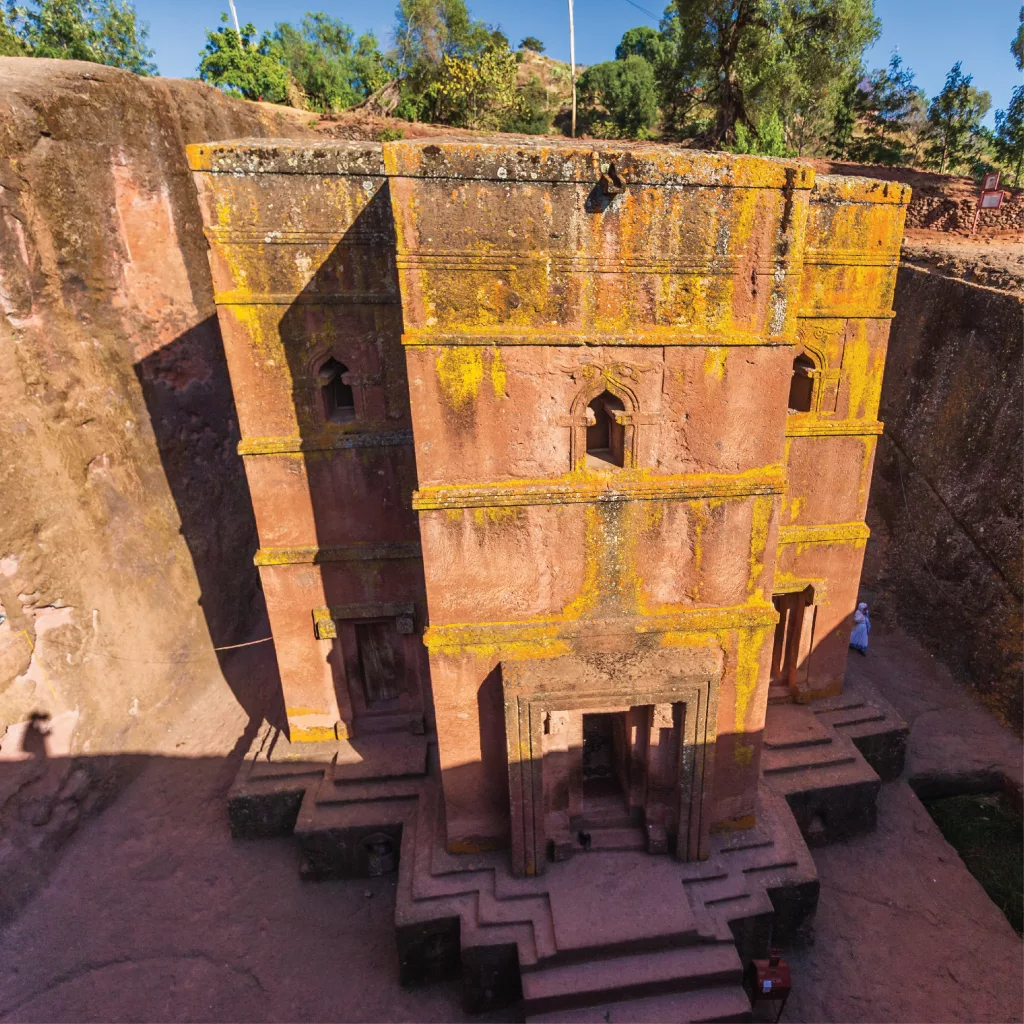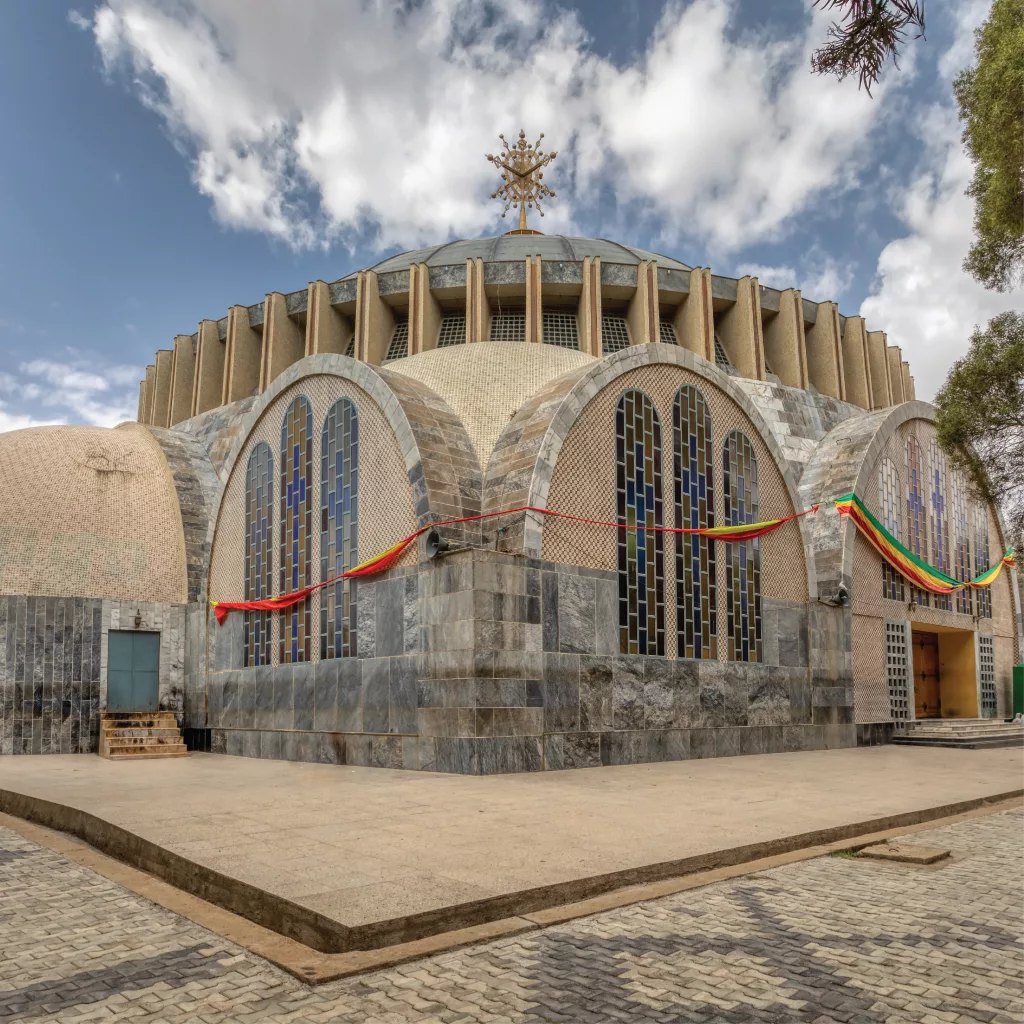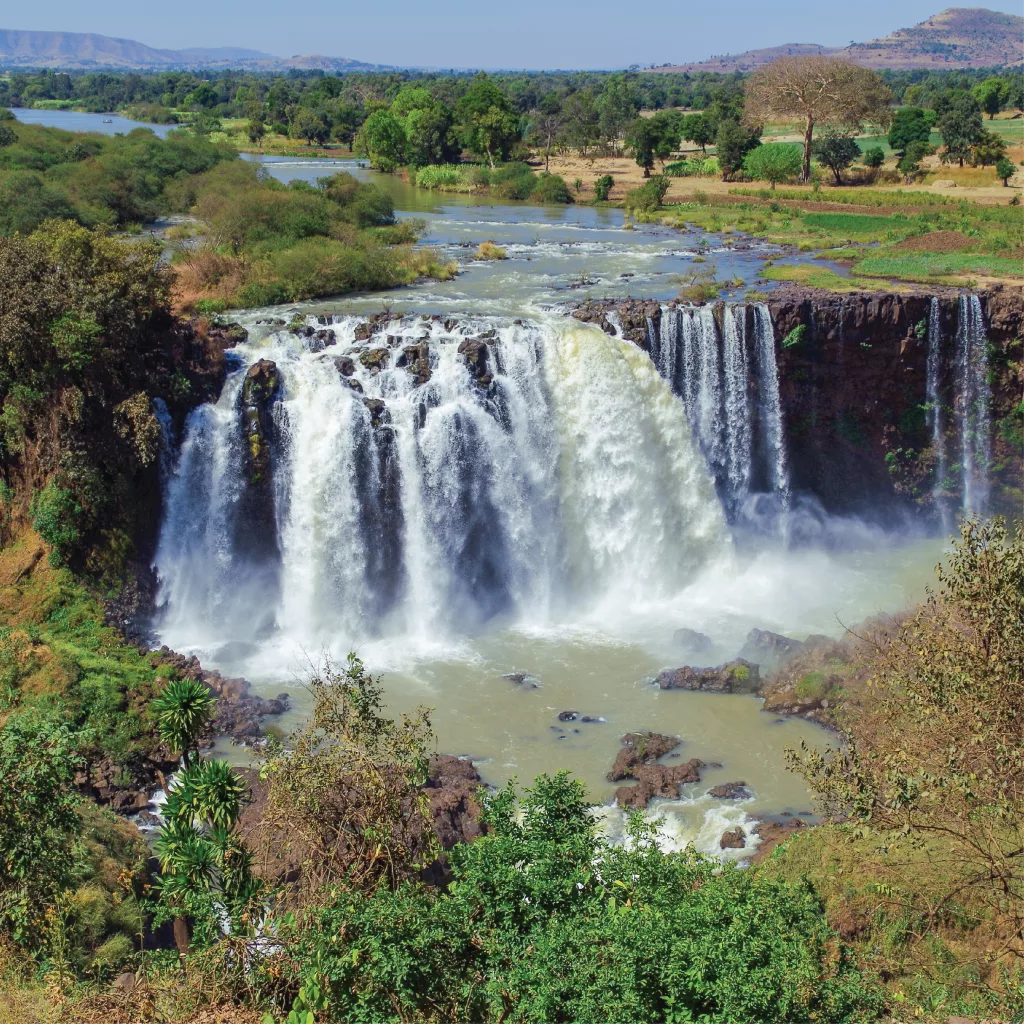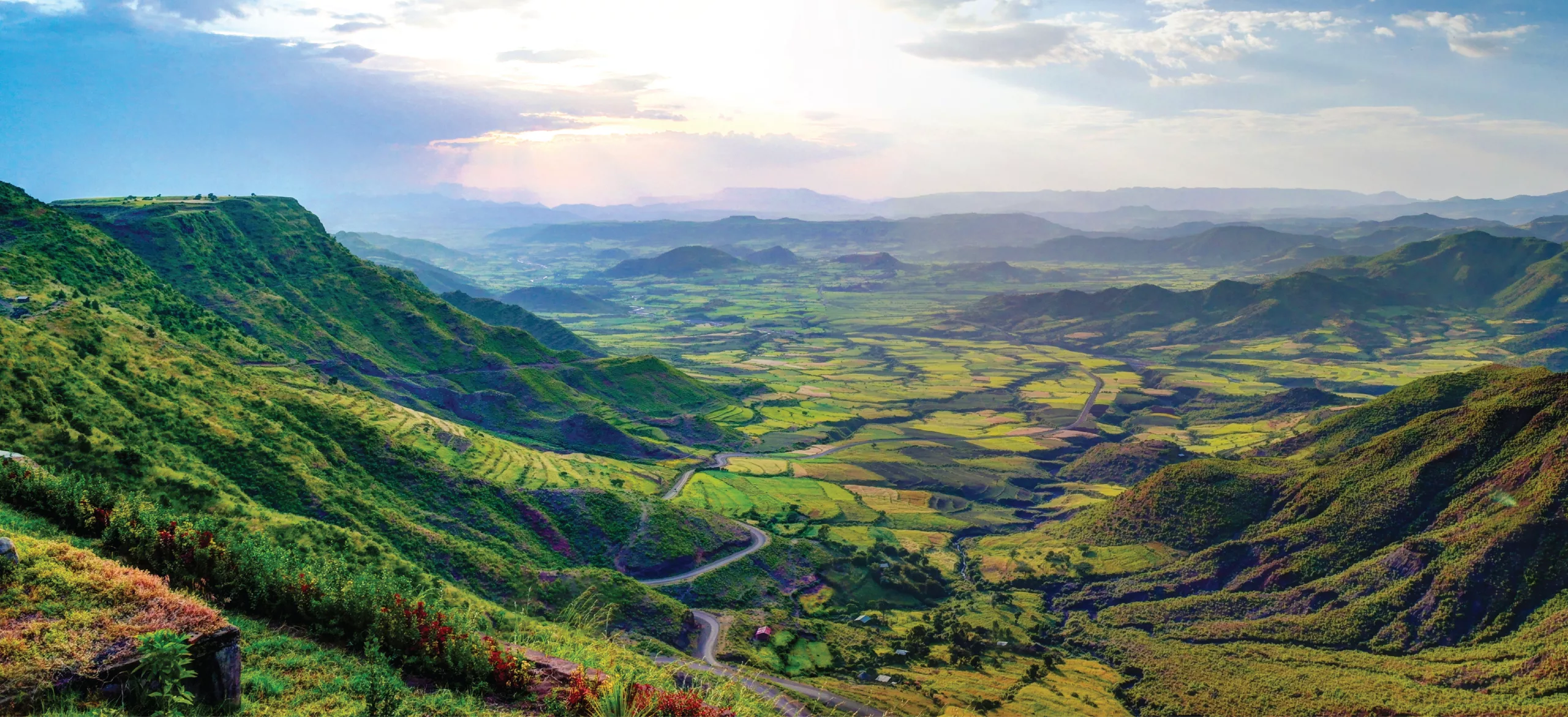Ethiopia, a land of profound historical depth and cultural richness, is an enchanting tapestry of diverse landscapes, ancient traditions, and vibrant communities. Nestled in the Horn of Africa, this East African nation boasts a heritage that predates recorded history, with archaeological finds dating back millions of years. Ethiopia is a captivating mosaic of high plateaus, deep valleys, and fertile highlands.
Beyond its archaeological wonders, Ethiopia has diverse ethnic groups, languages, and traditions, making it a unique crossroads of cultures. As a beacon of independence, Ethiopia stands as the only African nation that was never formally colonized, and its rich history continues to unfold against the backdrop of its stunning natural beauty. The country’s historical significance is underscored by iconic landmarks. Here are 3 such marvels that you cannot miss:

1. Rock-Hewn Churches of Lalibela: Lalibela, a true marvel, unfolds its rich tapestry of history through 11 medieval churches meticulously carved from solid rock in the 12th century. Recognized as a UNESCO World Heritage site, these awe-inspiring structures were envisioned by King Lalibela to mirror the spiritual grandeur of Jerusalem. Immerse yourself in the intricate carvings, cross-shaped designs, and secret passages that not only showcase unparalleled craftsmanship but also breathe life into places of worship, echoing the influence of Christianity in Ethiopia’s religious narrative. Dedicated to various saints, Lalibela’s churches transcend time, offering a mesmerizing journey into medieval Ethiopia’s religious fervour and artistic brilliance. These rock-hewn wonders stand as a living testament to the seamless blend of faith and craftsmanship, drawing pilgrims and tourists alike with their irresistible allure of spirituality and architectural splendour. Step into Lalibela’s embrace and witness the uniqueness that beckons those seeking an unforgettable fusion of history, devotion, and breath-taking marvels.
2. Axum: Axum, a historical treasure nestled in the heart of Ethiopia, resonates with ancient history that has been weaved together. Renowned as one of the oldest continuously inhabited places in Africa, Axum stands as a testament to a bygone era of greatness. This UNESCO World Heritage site bears witness to the once-mighty Axumite Empire, showcasing enigmatic obelisks, imposing stelae fields, and the legendary Queen of Sheba’s palace ruins. The city’s significance is further underscored by the Church of St. Mary of Zion, believed to house the Ark of the Covenant. Though it has been rebuilt several times, it stands as a cradle of Ethiopian civilization, captivating visitors with its archaeological wonders, providing an alluring glimpse into the cultural and historical tapestry that has shaped the region for millennia.


3. Lake Tana and the Blue Nile Falls Lake Tana, the largest lake in Ethiopia, serves as a tranquil reservoir of natural beauty and cultural significance. Nestled amidst lush landscapes, the lake is dotted with historic monasteries, some dating back to the 14th century, each housing priceless religious artifacts and vibrant murals. At the northern outlet of Lake Tana, the Blue Nile River begins its majestic journey, eventually culminating in the breathtaking Blue Nile Falls, also known as “Tis Issat” or the “Smoking Water.” This natural spectacle, with its cascading waters framed by verdant surroundings, is a testament to Ethiopia’s diverse and captivating landscapes. The falls, plunging dramatically, create a mesmerizing display of mist and rainbows, which is a feast to the eyes of any nature lover. Lake Tana and the Blue Nile Falls together form a harmonious symphony of nature and history, inviting visitors to explore the rich tapestry of Ethiopia’s geographical and cultural heritage.
To delve into Ethiopia’s rich cultural history and diversity, contact your T3 Agent right now!


